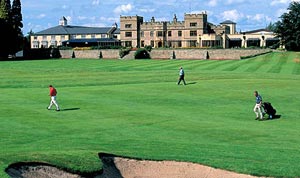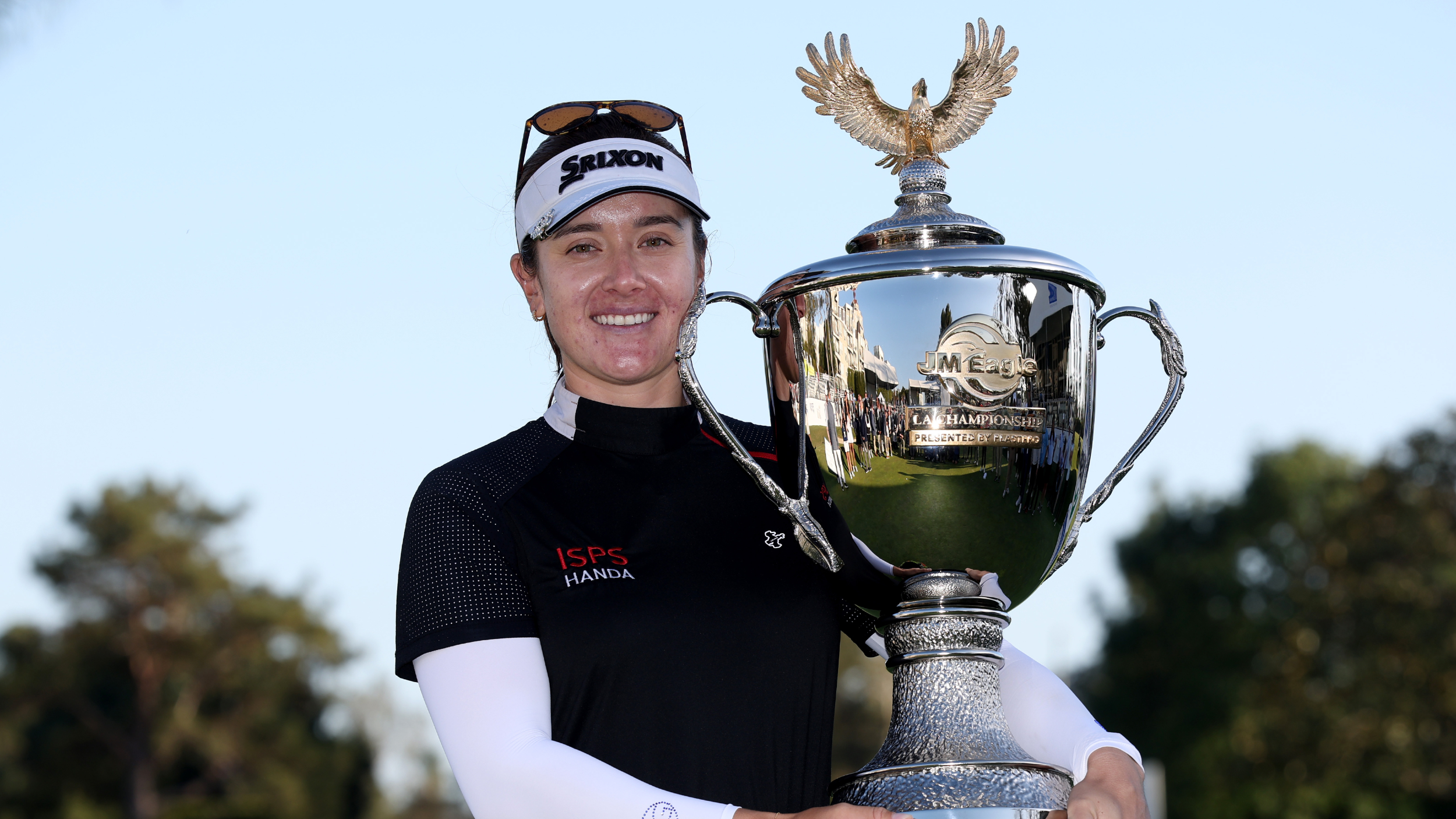England - Durham
Soak up the history, and enjoy parkland and links golf at this gem in the North East


Following the conquest of 1066, William the Conqueror quickly realised the importance of extending his control northwards. A Norman nobleman, Robert Comine, was installed as Earl of Northumbria. But, almost as soon as he arrived in the region, he (and 700 of his men) were killed in the City of Durham. The massacre prompted Wiliam's infamous "harrying of the north". The Anglo-Saxon Bishop of Durham fled and William appointed a new man who was tasked with expanding Norman influence through the region. From then on the "Prince Bishops" of Durham had the power to raise taxes, mint coins and had supreme jurisdiction, both civil and military. For centuries they occupied the most powerful position in the area and had responsibility for defending the region against the persistently troublesome Scots.
The magnificent cathedral and castle that dominate Durham's skyline remain as a reminder of the Bishops' power. They provide one of the country's finest examples of Norman architecture and, since 1986, have been a designated World Heritage Site.
Just four miles from the centre of Durham, it seemed fitting that Brancepeth Castle was the first stop on our North-Eastern adventure. Strolling around Durham earlier that morning the imposing cathedral and castle gazed down upon us, then, in the afternoon, we enjoyed a splendid round played in the shadow of Brancepeth Castle. With parts of the building dating from the 12th century, legend has it that William Wallace sacked the castle in 1297. The golf course is considerably newer: construction started in 1923. It's a great example of a Harry Colt creation and one of the most secluded and beautiful courses in the North East.
I normally refrain from mentioning specific holes but here I am making an exception. The 9th at Brancepeth Castle is an absolutely belting par 3. It's 214 yards over a ravine to a fast-running green with the castle as a backdrop - not only is it spectacular aesthetically but it also poses one of Brancepeth's toughest tests. Standing on the tee you'd gratefully accept a four.
After a very pleasant post-round pint in Brancepeth's comfortable clubhouse we made our way back to Durham. An enjoyable evening followed including a fairly extensive tour of some of Durham's many pubs and inns. The Dun Cow Inn on Old Elvet, a 16th Century alehouse, was perhaps the pick of the bunch.
Next morning, slightly bleary-eyed, we headed east down the A19 for Hartlepool and some seaside golf. The majority of the best tracks in the Durham area are parkland, yet Seaton Carew is a links of considerable quality. It's a unique set-up with 22 holes and two distinct courses, the Old and the Brabazon. The layouts share 14 holes and the Brabazon features four new ones. It's generally considered these additions make the younger track the more testing. After tackling the Old Course in a stiff autumn breeze I found that to be quite testing enough.
I've often heard negative comments about Seaton Carew's industrial surroundings, but I felt they provided an interesting juxtaposition; Teeside's petrochemical plants versus the natural dunes and stretching sands surrounding the holiday resort of Seaton Carew. I couldn't help thinking it encapsulated the North East work-hard/play-hard ethic.
Get the Golf Monthly Newsletter
Subscribe to the Golf Monthly newsletter to stay up to date with all the latest tour news, equipment news, reviews, head-to-heads and buyer’s guides from our team of experienced experts.
For the final leg of the trip we forged north-west towards Hexham. Six miles short of the market town we arrived at one of the North East's premier golf venues; De Vere's Slaley Hall boasts two superb courses - the Hunting and the Priestman. The former was the venue of the Great North Open, a European Tour event until 2002. It's rightly earned the moniker, "the Augusta of the North".
With incredible fairways snaking between avenues of towering pines to beautifully maintained greens, a round here feels like a real treat, as if you're intruding on a billionaire's personal playground. Water is the principal hazard around the Hunting. I certainly didn't pay enough attention to the positioning of the streams and ponds and on three occasions was forced to go fishing.
Durham and its surrounds are an overlooked destination for a golfing break. With a great selection of parkland courses, and some coastal gems, it certainly merits consideration. For those who also enjoy history the City of Durham offers a thousand years of it to explore.
CONTACTS BOOK
WHERE TO PLAY
Brancepeth Castle
T: 0191 378 0075
W: www.brancepeth-castle-golf.co.uk
STATS: par 70, SSS 70, 6,300 yards
Slaley Hall (Hunting)
T: 01434 673350
W: www.devere.co.uk
STATS: par 72, SSS 74, 7,073 yards
Seaton Carew
T: 01429 266249
W: www.seatoncarewgolf.co.uk
STATS: par 72, SSS 72, 6,622 yards
WHERE TO STAY
Durham Marriott Hotel Royal County
T: 0191 386 6821
W: www.marriott.com
Great views over the cathedral and castle, and ideally situated if you want to explore Durham. Parts of the hotel date from the 17th century but it's packed with the latest facilities, like a pool and fitness centre.
Seaham Hall Hotel and Serenity Spa
T: 0191 516 1400
W: www.seaham-hall.com
A luxurious small hotel in the town of Seaham just 20 minutes drive from Durham. Voted AA Hotel of the Year in 2004 the food at Seaham Hall received a Remy award from Harden's restaurant guide.
Farnley Tower Hotel
T: 0191 375 0011
W: www.farnley-tower.co.uk
Since it was built for a local architect in 1870 Farnley Tower has been a doctor's surgery and residential care home. Since 1998 it's been a comfortable hotel. With views over the city centre it's a short stroll from the shops and restaurants.
OFF COURSE
Durham Cathedral
Open to visitors daily.
Durham Castle
Open July-September, and Easter and Christmas daily 10am-noon and 2pm-4.30pm. Other times of year: Monday, Wednesday, Saturday and Sunday from 2pm-4pm.
Durham Light Infantry and Art Gallery
Open daily 10am-5pm.

Fergus is Golf Monthly's resident expert on the history of the game and has written extensively on that subject. He has also worked with Golf Monthly to produce a podcast series. Called 18 Majors: The Golf History Show it offers new and in-depth perspectives on some of the most important moments in golf's long history. You can find all the details about it here.
He is a golf obsessive and 1-handicapper. Growing up in the North East of Scotland, golf runs through his veins and his passion for the sport was bolstered during his time at St Andrews university studying history. He went on to earn a post graduate diploma from the London School of Journalism. Fergus has worked for Golf Monthly since 2004 and has written two books on the game; "Great Golf Debates" together with Jezz Ellwood of Golf Monthly and the history section of "The Ultimate Golf Book" together with Neil Tappin , also of Golf Monthly.
Fergus once shanked a ball from just over Granny Clark's Wynd on the 18th of the Old Course that struck the St Andrews Golf Club and rebounded into the Valley of Sin, from where he saved par. Who says there's no golfing god?
-
 JM Eagle LA Championship Prize Money Payout 2025
JM Eagle LA Championship Prize Money Payout 2025The LPGA Tour heads to California for the JM Eagle LA Championship, where the largest prize money payout of the season so far is on the table
By Mike Hall
-
 Corales Puntacana Championship Prize Money Payout 2025
Corales Puntacana Championship Prize Money Payout 2025The PGA Tour’s latest opposite field event features an attractive prize money payout and some former champions in the field
By Mike Hall